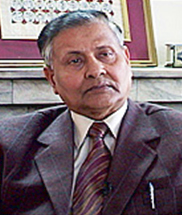General Mirza Aslam Beg, Former Chief of Army Staff, Pakistan
After disengaging from two futile and expensive wars in Iraq and Afghanistan, America has shifted its Strategic Pivot to the Asia-Pacific region. The objective of this shift has been defined under the Defence Strategic Guidance:
- The US will equip itself for an Ocean War “in the arc extending from the Western Pacific and East Asia into the Indian Ocean Region and South Asia.”
- US will support a quasi-alliance of Japan, India and Australia, to dilute Chinese influence and make China face the pressure of economic and trade hegemony of the Alliance. Thus one of the most important tasks of “American statecraft, over the next decade will be to lock-in a substantially increased Chinese investment-diplomatic, economic and strategic.”
- US will forge the Trans-Pacific-Partnership to restrict China, through a deal for a free trade bloc, linking the Pacific Rim States.
- US will rebalance its posture in the region, through a more balanced distribution of its military resources, which had long been concentrated on North East Asia.
- There will be no direct intervention, like Iraq and Afghanistan. The coalition partners will do the needful as in Somalia, Libya, Bahrain, Syria and elsewhere.
- “The future of politics will be decided in the Asia Pacific region, and the US will be right at the centre of the action,” Hillary Clinton – “and will intervene militarily on Senkakus Islands conflict with China.” Thus US will allow increase in the role of Japan’s Self Defence Forces, with an aim to bolster regional military cooperation.
- The ‘Swing Players’ must endeavour to balance the interests of US, while taking sides of either, in order to maximize their own national interests.
The Defence Strategic Guidance is conceptualized around three premises. First, the belief that US will be able to restore its military and economic prowess, to play the role in the new world order, as they did during the 20th century. Second, the US will be able to draw China into the open, to play the cold war game of the last century. Third, that the regional powers as well as the “Coalition of the Wiling” would help to implement the strategy.
These lofty objectives are difficult to achieve, because during the last thirty years, the US ambition to play a dominant role in the new world order has remained subdued and suppressed due to opposition by the Islamic Resistance, rising from the soil of Afghanistan-Pakistan. The global order also has turned multi-polar, with the emergence of new regional powers. The strategy to draw China into the open, is not going to work either, because China’s priorities are different and it is no mood to play the game on American terms. The policy to contain and curb China’s rising power, therefore “will generate dynamics that would increasingly threaten to undermine America’s primacy goals. This strategy is also in danger of enhancing rather than reducing bad security outcomes.”
China is a rising power and is the biggest holder of hard currency, with a reserve that exceeds US$ 2.7 trillion, whereas US with a fledging economy after the two expensive wars, owes over US$ 4.0 trillion to China in debt. The economic compulsions, therefore do not promote the strategy of Asia Pacific Pivot. Historically China has been a proselytizing power. They have been subjected to aggression over the centuries forcing them to build the protective Great Wall. China does not seek influence and domination over others land. They do not impose their ideology on others. They pose no existential threat to US either. China’s main concern is, search for oil and energy and mineral wealth, to raise the living standards of their people, equal to one fifth of the humanity. Thus during the last two decades, China has entered into long term deals, committing over a trillion US$, with countries of the world, who could offer oil, gas or minerals, creating economic linkages through diplomacy and not through the use of military power “China plays the role of a facilitator, consolidating a regional cooperative relationship regime,” based on the principles of Peace, Cooperation and Engagement.
Therefore, the interest of America and their allies would be better served by developing ‘regional cooperative relationship regimes’, using the ‘soft power’ and reducing global military commitments. The new geo-strategic realities that have emerged from three decades of wars, conflicts, revolutions and upheavals, demand an entirely new approach to world affairs. The times have changed and “the US policy makers, ruefully, now have to change their mental outlook towards the so called Islamic Extremism.” If one continues calling the freedom fighters of Afghanistan, Iraq, Palestine, Kashmir, Somalia and Yemen, etc as “Al-Qaida terrorists”, one becomes the very victim of such self-inflicted clichés, as of now.
We have been cursing ourselves for the Kargil blunder of 1999, but gets little consolation either analyzing the two futile and expensive wars of Afghanistan and Iraq where the US and the allies had been chasing Al-Qaeda, blamed for causing 9/11, yet this “powerful enemy” has not retaliated even once, during the last twelve years of this bloody struggle. Jonathan Power rightly comments:
“We must look at the lessons of history. Since 9/11 there has not been one successful attack on US. Not one of the (so-called radical Islamic) countries has produced one militant with a foreign agenda. By bombing the militants in their violence, post transition has been made most difficult. Military intervention rarely works.”
P.S. As the US disengages from this region and shifts the Strategic Pivot to the Asia-Pacific, the decision by the Pakistan government, to handover Gawadar port to China and accelerate the work on Pak-Iran gas pipeline, is timely and diplomatically very appropriate. Indeed it is a befitting parting-gift for the next government in power in Pakistan.
General Aslam Beg is one of the most authoritative analysts in Pakistan. He can be reached at friendsfoundation@live.co.uk
